| |
|
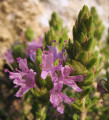 | |
| MaltaWildPlants.com by Stephen Mifsud |

|
| |
|
|
 |  |  |  |
| External Links: |
|
Bellis sylvestris (Southern Daisy) |
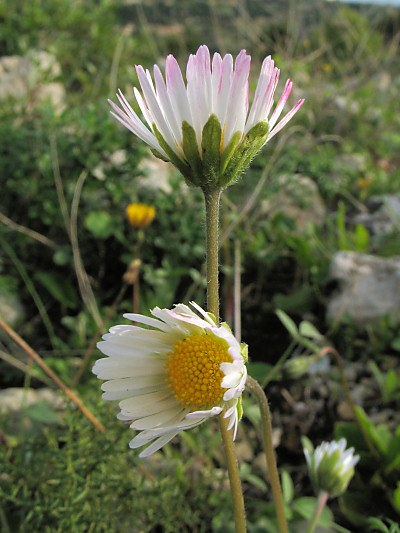
Bellis sylvestris (ASTERACEAE.)
Images for this profile are taken from the Maltese Islands after year 2000. |
|
| Nomenclature |
Species name : | Bellis sylvestris Cirillo | Authority : | Domenico Maria Leone Cirillo, Italy, (1739 - 1799) | Synonyms :
(basionym or principal syn.) |
|
Plant Family : | Asteraceae Bercht. & J.Presl (= Compositae )
(Daisy or Sunflower Family) | English name(s) : | Southern Daisy, Wood Daisy | Maltese name(s) : | Margerita salvaġġa | Status for Malta : | Indigenous. Present on the Maltese islands before man | Name Derivation : |
Bellis: word meaning dainty and pretty used back by Pliny (1st century) for daisy-like plants. (Latin origin ); 2 = pretty (Latin).
sylvestris: Belonging, related or growing in woods and forests. (Latin origin ); 2 = growing in woods, forest-loving (Latin).
| Remarks : | |
|
| Morphology and structure |
PLANT STRUCTURE: |
Character | Growth Form | Branching | Surface |
Description | | | |
General
Picture |  |  | 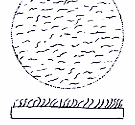 |
|
LEAVES: |
Character | Arrangement | Attachment | Venation |
Description | | | |
General
Picture | 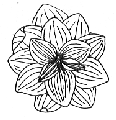 | 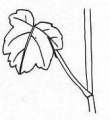 |  |
| |
Character | Leaf Shape | Leaf Margin | Remarks |
Description | | | |
General
Picture |  | 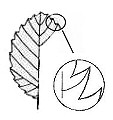 |  |
|
FLOWERS: |
Character | Colour | Basic Flower Type | No. of Petals | No. of Sepals |
Description | White Petals are flushed in violet towards the upper part; more visible at the lower face. | | 40-50 Referring to the ray florets. | 18-22 Referring to the phyllaries of the involucre. |
General
Picture | | 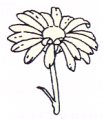 |  |  |
| |
Character | Inflorescence | Description | Ovary | Stamens |
Description | | White radiating flower heads consists of a cluster of central yellow florets (maturing from circumference to center) and numerous (about 50) radiating slender, white petals which often have purple tips, especially at the underside. | | |
General
Picture |  |  | 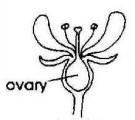 | 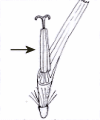 |
| |
Character | Scent | Average Flower Size | Pollen Colour | Other Notes |
Description | YES Mild sweet scent. | 25-35mm | Yellow | - |
|
SEEDS: |
Character | No. Per Fruit | Shape | Size | Colour |
Description | 160-200 (per flower head). | | 1.5mm | Brown |
General
Picture |  | 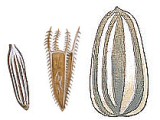 |  |  |
|
FRUIT AND OTHER BOTANICAL DATA: |
Character | Fruit Type | Colour of Fruit | Subterranean Parts | Other Notes |
Description | | Brown | | - |
General
Picture | 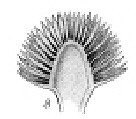 |  |  |  |
|
|
| Plant description and characters | |
Life Cycle: | Perennial. |
Growth Form: | HEMICRYPTOPHYTE (prostate plants with flowers close to the ground) |
Habitat: | Prefers to grow in the shade or humid locations in sheltered wooded areas, thickets, rock basins on rocky banks or valley sides. Prefers partial shade. |
Frequency: | Frequent |
Localities in Malta: | Not very common but locally frequent. Found under trees at limits of Buskett (near Sculpture's Lodge), and garigues near Verdala Palace. Also scattered in Mtahleb, Bingemma, Girgenti, Wied Encita and Wied il-Ghasel. |
Plant Height: | 16-30cm. |
| Nov-Feb |
Protection in Malta: | Not legally protected till the last update of this website (2/Mar/2022) |
Red List 1989: | Not listed in the Red Data Book of the Maltese Islands |
Poison: | |
This perennial plant consists of a basal rosette of leaves and one to few flowering stalks about 25-30cm long. The flowering stem is grayish- mauve to olive green in colour, covered with short hair and holds a solitary flower heads. The flower stalks are not branched.
The leaves are arranged as a basal rosette few cms above ground level. They have an elongated spoon shape (oblong-spatulate) and have a smooth or more often slightly serrated outline. Leaves are also hairy, have winged stalks, and are usually between 5 to 8 cm long and approximately 2cm broad. One may see 1, 2 or 3 branching veins from the main central vein (midrib). This is one important feature which distinguish it from the common daisy (Bellis perennis) which have only a central midrib without branching veins.
The diameter of the flower head is between 30-40mm and it consists of a yellow center made up by few hundreds of disc florets, and a white radiating petals (ray florets). There is about 45-50 slender, silky, petals, and quite often they have a purple-flushed tip (20%-50% of the petal length). The purple tinge is more prominent at the underside face of the petal than the upper face. Sometimes, petals have most of the underside purple while the upper face is all white. There is large variety on the ratio and position of purple-ness in the petals. Another observation is that the pure white flowers (with no purple tinge) have the tendancy to be larger (longer petals), and more symmetrically attractive. Flowers close up as soon as the light conditions gets dim, such as during cloudy weather and well before sunset.
Each disc-floret have an underlying ovary, in which fertilisation can take place to develop into the seed. The wall of the ovary become the outer coat of the seed and in such cases, the seed is referred to as an achene. Achenes lacks pappus and there is no obvious means of seed dispersal. Probably seeds are carried around in the soil by insects such as ants. The seeds are slightly hairy, brown in colour, flattened (tooth-like shape) and 1.5mm long.
|
|
| Information, uses and other details |
Edible Uses
Leaves - raw or cooked [2, 7, 52, 115]. The flavour is somewhat acrid [4]. A pleasant sour flavour according to another report [238] whilst a third says that they are mild and agreeable and are used in salads [217]. The daisy is occasionally used as a potherb [183].
Flower buds and petals - raw [144, 183]. Eaten in sandwiches, soups and salads [183].
Medicinal Uses
The following properties are taken from the source - Plants for a future [WWW-02] which where described for the common wild daisy (B. perennis). Since B. perennis and B. sylvestris are very closely related, it is very probable that both share the same medicinal properties.
| Anodyne |
used to relieve pain. [WWW-32] |
| Antispasmodic |
used to relieve or prevent spasms (especially of the smooth muscles) [WWW-32] |
| Antitussive |
used to suppress or relieve coughing. [WWW-32]
|
| AntiCancer |
used in the treatment of cancer; "anticancer drug"; "an antineoplastic effect". [WWW-32] |
| Demulcent |
a medication (in the form of an oil or salve etc.) that soothes inflamed or injured skin. [WWW-32] |
| Digestive |
used to aid digestion, as a food or medicine. [WWW-32] |
| Emollient |
substances resembling cream that have a soothing and moisturising effect when applied to the skin. [WWW-32] |
| Expectorant |
used to induce the ejection of mucus, phlegm, and other fluids from the lungs and air passages by coughing or spitting. [WWW-32] |
| Laxative |
Having the effect of loosening or opening the intestines, hence stimulating evacuation of feces and so relieving from constipation. [WWW-32] |
| Ophthalmic |
relating to the eye; hence have medicinal properties for the health of the eye. [WWW-32] |
| Purgative |
a purging medicine; stimulates evacuation of the bowels. [WWW-32] |
| Tonic |
a medicine that strengthens and invigorates hence restores normal tone to tissues or to stimulate the appetite. [WWW-32] |
Daisies are a popular domestic remedy with a wide range of applications [7]. They are a traditional wound herb [238] and are also said to be especially useful in treating delicate and listless children [7]. Recent research (1994) has been looking at the possibility of using the plant in HIV therapy [238]. The herb is mildly anodyne, antispasmodic, antitussive, demulcent, digestive, emollient, expectorant, laxative, ophthalmic, purgative and tonic [7, 9, 21]. The fresh or dried flowering heads are normally used [9]. An infusion is used in the treatment of catarrh, rheumatism, arthritis, liver and kidney disorders, as a blood purifier etc [9].
In 1771 Dr. Hill said that an infusion of the leaves was 'excellent against Hectic Fevers. The Daisy was an ingredient of an ointment much used in the fourteenth century for wounds, gout and fevers. [WWW-03]
The daisy once had a great reputation as a cure for fresh wounds [4]. An ointment made from the leaves is applied externally to wounds, bruises etc [4, 232] whilst a distilled water is used internally to treat inflammatory disorders of the liver [4]. Chewing the fresh leaves is said to be a cure for mouth ulcers [244]. Daisies also have a reputation for effectiveness in treating breast cancers [7].
Daisy is useful for coughs and catarrh, and for all conditions that manifest in these forms, Daisy may be used freely and safely. It has a reputation of value in arthritis and rheumatism as well as in liver and kidney problems. Due to its astringency it is also useful for diarrhoea. [WWW-08]
The flowers and leaves are normally used fresh in decoctions, ointments and poultices [238].
A strong decoction of the roots has been recommended for the treatment of scorbutic complaints and eczema, though it needs to be taken for some time before its effect becomes obvious [244]. A mild decoction may ease complaints of the respiratory tract, rheumatic pains and painful or heavy menstruation [244].
The plant, harvested when in flower, is used as a homeopathic remedy [232]. Its use is especially indicated in the treatment of bruising etc [232].
Active Compounds
According to reference [WWW-08] the flower heads (fresh or dried) have the following active components:
- Saponins
- Tannin
- Essential oil
- Flavones
- Bitter principle
- Mucilage.
Other Uses
An insect repellent spray can be made from an infusion of the leaves [57]. On account of the acrid juice contained in the leaves, no cattle will touch it, nor insects attack it. [WWW-03]
Curiosities and Sayings
The roots, too, have a penetrating pungency, containing some tannic acid, and there was once a popular superstition that if they be boiled in milk and the liquid given to puppies, the animals will grow no bigger. [WWW-03]
According to some old writers, the generic name is derived from the Latin bellus (pretty or charming), though others say its name is from a dryad named Belidis. The common name is a corruption of the old English name 'day's-eye,' and is used by Chaucer in that sense:
'Well by reason men it call maie
The Daisie, or else the Eye of the Daie.' [WWW-03]
There is a common proverb associated with the flower and its abundance in spring and early summer: 'When you can put your foot on seven daisies summer is come.' [WWW-03]
Personal Observations
Purple tipped flowers vs pure white flowers
It was noted that there are two types of flowers according to the colour of the rays (petals):
i) those which are totally white without any tinge of purple,
ii) those which are white and have purple tipped petals, and often most of the underside face of the petal is also purple.
It appeared that the white flower forms are larger, the rays are more symmetrically arranged and flowers looks to be 'healthier'. The purple tipped flowers have shorter and slightly more broad rays, and somehow looks disorganized in the sense that there is some ray missing (gap) , or not well opened, or rays of unequal length - all of which makes the flower looses symmetry and so it is less attractive. The white ones are more often perfectly balanced. [SM]
Pests/larvae living on the flower
While taking photos of the flower heads, tiny worms roaming in the flower's capitula were observed. The worms may not measure more than 2mm and what's distinctive in them is that they are bright red. Probably, it is a form of larvae. This scanned photo accidentally shows some of these larvae. If someone have information about these larvae please contact me so as to include the new information (with credits). [SM]
Flower and light
Like other daisies, the southern daisy opens fully in bright sunlight, and starts to close down when the light gets dim. Just before sunset, or when the sun is covered with some clouds, the flowers are partially close. At night or dull / rainy weather the flowers will close. Another feature is that the flower head turns so that it faces directly the sun. [SM]
Similar species
B. sylvestris can be easily mistaken with a similar Bellis species - the common daisy = B. perennis. The arrangement of leaves, flower head, and general appearance of both plants are similar. However there are few differences between the two plants which are described in the table below. Another daisy species, the Bellis annua, is included in the table for comparison purposes - it should be easily be not mistaken with B. perennis and B. sylvestris since it seldom have purple tipped flowers. Another point to mention is that the habitat in Malta is not favourable to the perennial B. perennis and it is very unlikely that they survive all year round, esp. in the hottest season of summer. The B. sylvestris is a stronger and a more adapted species to warm climates like Malta. [SM]
| Feature |
B. sylvestris |
B. perennis |
B. annua |
| Average plant height |
30cm |
15cm |
8cm |
| Leaf arrangement |
Rosette |
Rosette |
Alternately branching leaves |
| Leaf shape |
Oblong spatulate with winged stalks |
Spatulate (more roundish than elongated) and slender stalks |
Spatulate (more roundish than elongated) and slender stalks |
| Leaf veins |
One central mid vein with 1 to 3 branching sub-veins |
One central mid-vein only |
One central mid-vein only |
| Flower head diameter |
30-40mm |
15-30mm |
10-15mm |
| Purple tipped petals |
Common |
Common |
Rare |
|
|
| Links & Further literature
(0 papers) |

Google Web |

Google Images |

Google Scholar |

Research Gate |

Wikipedia |

JSTOR |

GBIF |

Med Checklist |

Cat. of Life |

EoL |

IPNI |

World Flora Online |

Plants of the World Online |

Vienna Virt. Herb. |

RBGE Herbarium |

KEW Herbarium |

MNHN |

Arkive |

IUCN |

CABI |
Kindly Email if there are papers and publications about local
studies or information about this species to be included in the list above.
|
| Photo Gallery (40 Images) | 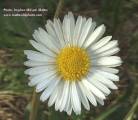 |
 |
 |
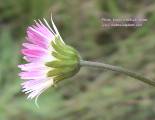 |
IMAGE: BLSSY-01 Photo of flower head. This flower do not have purple tipped petals but it is 'pure' white. Diameter of flower head is between 25 - 35mm. |
IMAGE: BLSSY-02 Photo of typical flower heads. Yellow center of disc florets and numerous radiating white petals, often with slight purple tinged tips. |
IMAGE: BLSSY-03 Photo of a flower head with characteristic purple tipped petals. The underside of the petal is usually contains a larger area of purple colour. |
IMAGE: BLSSY-04 Photo of flower (side view) showing the purple petals being more colourful towards the tip. |
 |
 |
 |
| IMAGE: BLSSY-05 Photo of flower (side view) showing that the purple colour is more strong at the underside of the petals. |
IMAGE: BLSSY-06 Close up photo of flower with prominent purple tipped petals. As it can be seen in this gallery there is considerable variation between the amount of purpleness between flowers. |
IMAGE: BLSSY-07 Photo of 2 flowers of Bellis sylvestris having a typical daisy-like structure and found in many locations around the Maltese islands during Autumn and Winter. |
IMAGE: BLSSY-08 - |
 |
 |
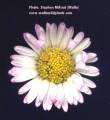 |
 |
IMAGE: BLSSY-09 Photo of flower (underside view) showing the star-shaped involucre made up of several finger like phyllaries. |
IMAGE: BLSSY-10 Young blossoming flower with very contrasting purple and white colours at the opposite faces of the petals. |
IMAGE: BLSSY-11 Scanned image of purple-tipped flower head against a dark background. |
IMAGE: BLSSY-12 Scanned image of pure white flower head against a dark background. The white type seems to have more long and slender petals. |
 |
 |
 |
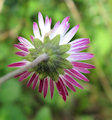 |
IMAGE: BLSSY-13 Photo of the attractive flower. |
IMAGE: BLSSY-14 Photo of another specimen with a white flowers slight flushed pink at the tip of the petals. |
IMAGE: BLSSY-15 Photo of flower - white above and flushed pink below. |
IMAGE: BLSSY-16 Photo of underside of flower, often (but not always) purple-pink. |
| | 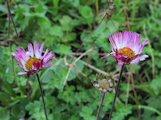 |
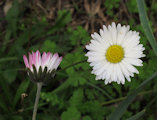 |
 |
IMAGE: BLSSY-17 - |
IMAGE: BLSSY-18 Photo of two flowers, almost purple. There is a kind of relationship between the purple colour and small sizeof flowers. |
IMAGE: BLSSY-19 Photo of flower showing the colour of the petals. Lower face is purple-tinged while the upper is normally white (sometimes pinkish.). |
IMAGE: BLSSY-20 Photo coparing the lower and upper faces of flowers of this species. |
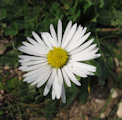 |
 |
 |
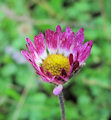 |
IMAGE: BLSSY-21 A pure white specimen of Bellis sylvestris. |
IMAGE: BLSSY-22 A pale pink specimen of Bellis sylvestris. |
IMAGE: BLSSY-23 A pink specimen of Bellis sylvestris. |
IMAGE: BLSSY-24 A purple specimen of Bellis sylvestris. |
 |
 |
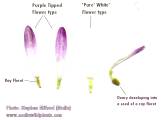 |
 |
IMAGE: BLSSY-25 Close up photo of center of flower head (the capitula) showing the numerous yellow disc florets - a characteristic feature of the Compositaee family. The florets that open first are those at the periphery and the opening moves progressively towards the center. |
IMAGE: BLSSY-26 Scanned side-view image of flower showing involucre, stem (both hairy) and petals. |
IMAGE: BLSSY-27 Scanned image of the two types of petals. As it can be seen the petals also arise from disk-florets which like disc florets, they have fertilization function and produce seeds. These are modified disk-florets in the sense that they possess a ray (the petal) and are referred to as ray florets. |
IMAGE: BLSSY-28 Highly magnified (x200) image of disc florets under light microscope. This is the true fertilising flower unit. Like flowers, disc florets possess stigma, style, stamens, sepals, and ovaries. They are initially buds and open up when they are mature. |
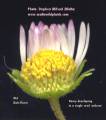 |
 |
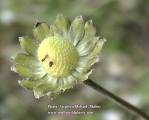 |
| IMAGE: BLSSY-29 Close up of receptacle showing old disc florets and green ovaries which develops into seeds. |
IMAGE: BLSSY-30 Dissected flower head showing the swollen receptacle, on which the ovaries are lied on with their old disc florets at the top. |
IMAGE: BLSSY-31 Photo of receptacle in situ with seeds already dropped off. The receptacle of the Southern Daisy is of the swollen type. |
IMAGE: BLSSY-32 - |
 |
 |
 |
 |
IMAGE: BLSSY-33 Scanned image of various leaves. They are generally spoon shaped (spatulate) and most of the times, have a serrated outline. They are often hairy. |
IMAGE: BLSSY-34 Scanned and magnified image of typical leaves. |
IMAGE: BLSSY-35 Photo of habitat of this species in the Maltese islands. Often along pathways, passages and soily areas at the valley sides. |
IMAGE: BLSSY-36 Photo of several plants flowering in November. Flowering period typically Nov-Dec. |
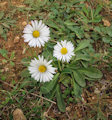 |
 |
 |
| IMAGE: BLSSY-37 Photo of few plants in situ. Plant exhibits itself in a basal rosette of leaves with erect stems bearing a single white flower head. |
IMAGE: BLSSY-38 Photo of plant which briefly consists of a basal rosette of leaves, long, erect flower stalks and a typical dasiy flowers with white 'petals' and yellow centres. |
IMAGE: BLSSY-39 Photo of plant which briefly consists of a basal rosette of leaves, long, erect flower stalks and a conspicuous dasiy-like flowers. |
IMAGE: BLSSY-40 - |
 |
 |
 |
 |
IMAGE: BLSSY-41 Scanned image of seeds. They do not have a pappus so they are not dispersed by wind. Note the few whitish hair they have. |
IMAGE: BLSSY-42 Magnified scanned image of seeds. They are teeth shaped and are brown in colour. |
IMAGE: BLSSY-43 Illustration of plant provided by Missouri Botanical Garden. |
IMAGE: BLSSY-44 Illustration of plant from Rare Books. |
|
| | |

